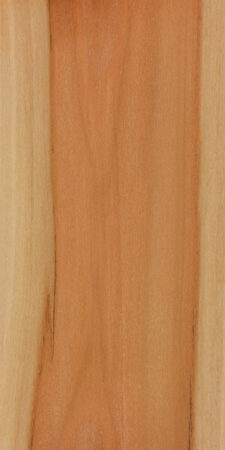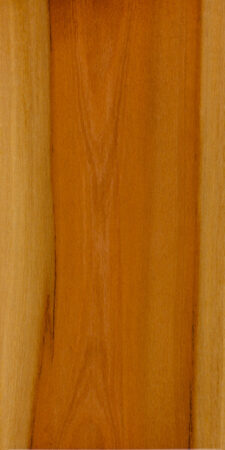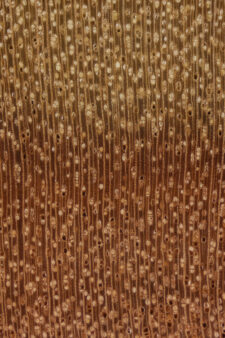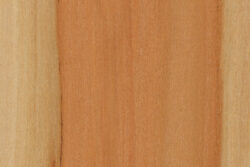Common Name(s): Doi, toi
Scientific Name: Alphitonia zizyphoides
Distribution: Pacific Islands
Tree Size: 65-85 ft (20-25 m) tall,
1-2 ft (.3-.6 m) trunk diameter
Average Dried Weight: 38.0 lbs/ft3 (610 kg/m3)
Specific Gravity (Basic, 12% MC): .48, .61
Janka Hardness: 1,150 lbf (5,120 N)
Modulus of Rupture: 11,560 lbf/in2 (79.7 MPa)
Elastic Modulus: 1,652,000 lbf/in2 (11.39 GPa)
Crushing Strength: 7,240 lbf/in2 (49.9 MPa)
Shrinkage: Radial: 3.3%, Tangential: 6.6%,
Volumetric: 10.0%, T/R Ratio: 2.0
Color/Appearance: Heartwood is orangish pink, while contrasting sapwood is pale yellow. Heartwood colors can be streaked and varied, and tend to darken with age.
Grain/Texture: Grain is straight, with a moderate to fine even texture.
Rot Resistance: Rated as perishable; susceptible to termites, but resistant to powder post beetles.
Workability: Easy to work with both hand and machine tools. Turns, glues, and finishes well.
Odor: No characteristic odor.
Allergies/Toxicity: Besides the standard health risks associated with any type of wood dust, no further health reactions have been associated with doi. See the articles Wood Allergies and Toxicity and Wood Dust Safety for more information.
Pricing/Availability: Use is limited to domestic harvesting, where the tree can be processed into general construction or utility lumber.
Sustainability: This wood species is not listed in the CITES Appendices, and is reported by the IUCN as being a species of least concern.
Common Uses: Firewood, general construction, furniture, cabinetry, flooring, and turned objects.
Comments: Doi has been grown on plantations, and in addition to its lumber, the tree’s bark is also used for traditional medicinal purposes, and fallen/shed limbs are commonly used for fuelwood within the Pacific Islands.
Images: Drag the slider up/down to toggle between raw and finished wood.
There are currently no pictures of this exact wood species, but a similar species within the Alphitonia genus is being substituted (A. excelsa). If you’d like to contribute a wood sample for this webpage, please see the contact form for donating wood samples.
Identification: See the article on Hardwood Anatomy for definitions of endgrain features.
Porosity: diffuse porous
Arrangement: solitary and radial multiples of two to five pores
Vessels: medium to large, few; light brown or reddish colored deposits present
Parenchyma: vasicentric, banded (marginal)
Rays: medium; normal spacing
Lookalikes/Substitutes: The combination of the pinkish orange heartwood and large pores occurring primarily as radial multiples makes doi a wood that’s hard to confuse with much else.
Notes: The endgrain pictures shown are from the related red ash (Alphitonia excelsa), which tends to have more prevalent radial multiples, and also lacks marginal parenchyma. (These features can help separate doi from some of the closely related Alphitonia species from Australia.)
Related Content:











